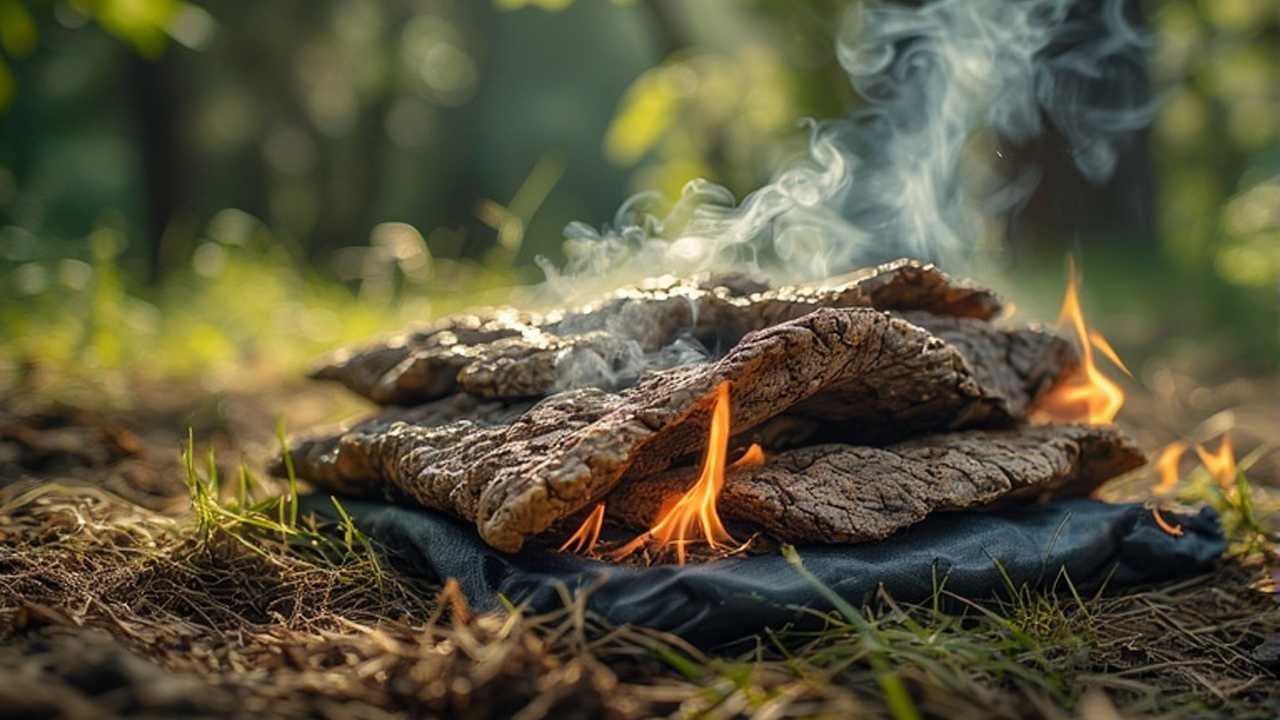10 Genius Camping Hacks for Your Most Effortless Trip Yet
Camping offers a perfect escape into nature, but packing the wrong gear or struggling with basic camp chores can quickly turn a relaxing getaway into a frustrating ordeal. Fortunately, with a bit of clever preparation and some ingenious tricks, you can elevate your entire outdoor experience. This guide unveils 10 of the best camping hacks, curated to save you space, lighten your load, and solve common problems, allowing you to focus on what truly matters: enjoying the great outdoors.
Furthermore, a successful trip isn’t just about clever tricks; it’s also about avoiding common pitfalls. By combining these practical hacks with solid preparation—like checking the weather forecast and arriving at your campsite with plenty of daylight left—you set the stage for a safe and memorable adventure. The following list delves into specific, easy-to-implement strategies that will make your next camping trip noticeably smoother and more enjoyable.
The Ultimate List of Camping Hacks for a Smoother Adventure
1. Master the Art of the DIY Fire Starter
A reliable campfire is essential for cooking, warmth, and ambiance. Instead of struggling with damp kindling, create your own ultra-reliable fire starters at home.
- The Petroleum Jelly Cotton Ball: Soak 100% cotton balls in petroleum jelly until they are fully saturated. Store them in a resealable plastic bag or a small, waterproof container. To use, simply pull a cotton ball apart to expose the fibers and ignite it with a spark or flame. The petroleum jelly acts as a fuel, causing the cotton to burn for several minutes—plenty of time to get your kindling going.
- The Snack-Sized Kindling: In a pinch, common corn chips like Doritos can be a fire-starter’s best friend. The high oil content in these chips makes them highly flammable. A small pile of chips will catch easily and burn long enough to ignite larger pieces of wood.
2. Illuminate Your Camp with a Simple Water Jug Lantern
Headlamps are incredibly useful, but their direct beam isn’t ideal for creating ambient campsite light. You can transform your headlamp into a soft, diffused lantern in seconds.
- The Hack: Strap your headlamp around a full gallon jug of water with the light facing inward. The water and the translucent plastic of the jug will scatter the light, creating a gentle glow that illuminates a much wider area than the headlamp beam alone. This provides perfect light for camp chores, cooking, or playing cards without the harsh glare.
3. Outsmart the Elements with Strategic Water Management
Water is heavy, and melted ice in your cooler can ruin food. Solve both problems with one clever trick.
- Freeze Drinking Water: Before your trip, freeze several water bottles or even gallon jugs of water solid. Use these frozen blocks in your cooler instead of loose ice. They will melt slower and, as they thaw, provide you with a supply of fresh, cold drinking water, eliminating the soggy food problem and saving you from having to pack separate ice.
4. Pack a Miniature, Multi-Purpose Repair Kit
Duct tape is the quintessential repair tool, but a full roll is bulky and unnecessary. Ensure you always have some on hand without wasting precious pack space.
- Wrap Your Gear: Wrap several feet of duct tape around your water bottle or trekking pole. This keeps it readily available for mending a torn tent fly, patching a sleeping pad, fixing a broken strap on your backpack, or even covering a blister. It’s a lightweight, space-saving solution that prepares you for almost any minor equipment failure.
5. Pre-Prepare Meals and Spices for Effortless Cooking
Prepping food at camp can be time-consuming. Simplify the process by doing the work at home where you have ample counter space and running water.
- Chop and Marinate at Home: Chop all your vegetables, marinate meats, and pre-measure ingredients for your camp meals. Store them in separate resealable bags. This not only saves time but also reduces the amount of garbage and cleanup you have to deal with at the campsite.
- Create a Mini Spice Rack: Ditch bulky spice jars. Fill a small, multi-compartment pill organizer with your essential spices and seasonings. Alternatively, for individual portions, you can cut plastic straws into segments, melt and seal one end, fill them with a spice, and then melt-seal the other end to create waterproof, single-use spice packets.
6. Keep Your Gear Organized and Accessible
Rummaging through a disorganized pack for a utensil or headlamp is a surefire way to dampen the camping mood. A few simple organizational systems can make a world of difference.
- Use a Hanging Organizer: A hanging shoe organizer with multiple clear pockets can be a game-changer at the campsite. Hang it from a tree branch or your tent’s frame to store cooking utensils, spices, flashlights, and other small items, keeping them off the ground and easy to find.
- Pack Clothes in Resealable Bags: Pack each day’s clothing or different clothing layers (base layers, socks) in separate resealable plastic bags. This not only keeps them completely dry in case of rain but also compresses them to save space and makes finding what you need a breeze.
7. Hack Your Hygiene and Cleanup Routine
Staying clean in the wilderness can be a challenge, but a few small tweaks to your routine can make it much more manageable.
- Make a Portable Dish-Drying Rack: After washing your dishes, place them in a mesh laundry bag and hang it from a tree branch. The mesh allows air to circulate freely, drying your dishes quickly and hygienically without taking up table space.
- Waterproof Your Matches: Keep your matches dry and easy to strike by storing them in a small mason jar with a piece of sandpaper glued to the inside of the lid. The jar is waterproof, and the sandpaper provides a reliable striking surface no matter the weather.
8. Ensure a Warm and Comfortable Night’s Sleep
Cold nights can make for a miserable camping experience. A simple, old-school trick can make your sleeping bag feel like a warm cocoon.
- The Hot Water Bottle: Before bed, heat water on your camp stove or fire. Carefully pour it into a durable, leak-proof water bottle, screw the lid on tightly, and place it at the foot of your sleeping bag. The bottle will radiate heat for hours, warming your feet and the interior of your bag. This is especially helpful on unexpectedly chilly nights.
9. Create a Cozy Pillow Without the Bulk
Pillows take up a surprising amount of room in your pack. You can create a perfectly comfortable one using items you’re already bringing.
- The Stuff-Sack Pillow: Use the stuff sack for your sleeping bag or a spare pillowcase and stuff it with the soft clothing you aren’t wearing to bed, such as a fleece jacket or next day’s outfit. Adjust the amount of clothing to achieve your desired firmness. This saves a significant amount of space and means one less item to pack.
10. Do a Pre-Trip Gear Shakedown
One of the most common beginner mistakes is discovering faulty or unfamiliar gear when it’s too late to fix it. Avoid this by testing everything before you leave home.
- Practice Makes Perfect: Set up your tent in your backyard or living room to ensure all parts are present and you understand the assembly process. Test your camp stove to make sure it lights and functions correctly. Practice using your water filter. This pre-trip familiarization prevents frustration and ensures you can rely on your gear when you’re miles from civilization.
Essential Gear Considerations for a Smooth Trip
While hacks can dramatically improve your trip, having the right foundational gear is equally important. The table below compares key considerations for two major pieces of equipment: your shelter and your sleeping bag.
| Gear Category | Key Considerations | Why It Matters for an Easier Trip |
|---|---|---|
| Backpacking Tent | Weight, Weather Protection, Interior Space, Setup (Freestanding vs. Non-Freestanding) | A tent that is quick to set up, can handle a surprise rain shower, and doesn’t weigh you down is a cornerstone of an enjoyable experience. For more, see our guide on choosing the best lightweight backpacking tents. |
| Sleeping Bag | Temperature Rating, Insulation Type (Down vs. Synthetic), Fit & Shape | A bag that matches the expected temperatures and fits your body properly is non-negotiable for a warm, restorative night’s sleep. A poor night’s sleep can ruin the entire next day. |
Beyond Hacks: Pro-Tips to Avoid Common Mistakes
Integrating these hacks into a broader framework of good practices will make you a more confident and capable camper.
- Always Use a Packing Checklist: Never trust your memory. A detailed checklist ensures you bring all the essentials and helps prevent overpacking. You can find a great resource to build your own with our ultimate camping checklist guide.
- Set Up Camp in Daylight: Aim to arrive at your campsite with plenty of daylight to spare. Pitching a tent and organizing your camp is far easier and safer when you can see what you’re doing.
- Wear the Right Clothing: Avoid cotton, which holds moisture and can lead to hypothermia. Instead, choose synthetic materials or wool that wick sweat and keep you dry and warm even when damp.
- Always Check the Weather: Research the forecast for your destination right before you leave. This allows you to pack appropriate clothing and gear, preventing a trip from being miserable or dangerous.
Conclusion: Hack Your Way to a Better Adventure
Camping should be about connection and relaxation, not battling with gear and logistics. By adopting these ten clever hacks—from creating your own fire starters to crafting a warm bed with a hot water bottle—you empower yourself to solve common problems with ease. When you combine these ingenious tricks with careful planning and the right gear, you free up your time and energy to fully immerse yourself in the peace and beauty of the natural world. So pack your duct-tape-wrapped water bottle and your bag of pre-made spices, and get ready for your most effortless, enjoyable camping trip yet.

